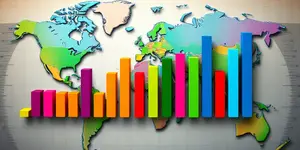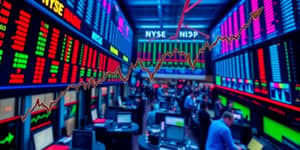
In the wake of the Covid-19 pandemic, global financial markets have experienced an unexpected but enduring shift: retail investors now account for a meaningful share of daily trading activity. As of late 2024, the market-wide value traded remains elevated at around $600 billion per day, and retail participants represent nearly 6.5% of that, averaging $38 billion every session. Far from fading after the meme stock frenzy, retail engagement has settled at levels substantially higher than those seen in the 2010s.
What began as a pandemic-driven experiment in remote trading has matured into a sustained phenomenon. Despite a dip to pre-pandemic volumes in 2022, retail value traded has rebounded, and share volumes recently touched 9%. Institutional investors now view individual traders as an essential liquidity source for markets, one that underpins price discovery across stocks and ETFs while bringing fresh capital into equity markets.
The Covid-19 lockdowns and massive stimulus packages ignited a surge in trading, as individuals found both time and capital to explore equity markets. While the initial rush was amplified by the 2021 meme stock craze, today’s retail participation is driven by more enduring forces. Current trading levels remain below those peaks, yet they stand well above pre-2020 averages, signaling a structural change.
According to market analysts, “Retail trading in stocks and ETFs remains a material proportion of the market, providing essential liquidity. Value traded by retail investors remains around 6.5% of market-wide trading, recently averaging $38 billion per day.” This quote underscores how individual activity has shifted from a transient spike to a stable market factor that both professionals and regulators now monitor closely.
Several interlocking trends have cemented retail trading’s elevated status. From technology shortcuts to demographic transformations, these drivers create an environment in which individual investors remain highly active.
Combined, these factors have forged a new trading ecosystem where individual investors expect seamless execution, real-time analytics and community support. Trading is no longer confined to traditional brokerage desks; it’s now a daily habit for millions.
To appreciate the resilience of financial retailing, it is illuminating to compare it with broader consumer retail trends. Global retail sales climbed to $30.6 trillion in 2024—up 4.37% year-over-year—with online shopping revenue hitting $6.01 trillion. Physical stores still command over 80% of sales, yet e-commerce growth outpaces the rest of the sector.
While many pandemic-era savings have been spent, retail trading volumes have settled into a new normal rather than temporary spike. Meanwhile, physical retail property markets show their own robustness: U.S. investment volume grew 13% year-over-year in Q1 2025, reaching $9.8 billion, even as discount stores and drugstores shutter thousands of locations.
The confluence of digital innovation, cultural shifts and macroeconomic conditions has elevated both retail commerce and retail investing to unprecedented levels of activity and influence.
Despite its benefits, elevated retail trading carries inherent risks. Episodes of irrational exuberance—such as the meme stock phenomenon—remind us of the potential for volatility spikes and sharp reversals. Regulatory scrutiny is intensifying, with proposals to monitor leverage, impose trading fees or restrict certain derivatives for individual accounts.
Yet many experts view retail participation as a stabilizing force in market liquidity, particularly during sudden price swings. By buying dips and adding diversity to order books, individual investors often temper extreme moves initiated by high-frequency strategies.
For those inspired to navigate this robust trading landscape, practical steps can help harness its potential while managing risks: maintain a disciplined strategy, set clear stop-loss levels, diversify across sectors, and resist the lure of chasing every hot tip. Embrace educational resources and community forums to refine your approach, and approach every trade with a long-term mindset.
As retail trading cements its place in the global financial ecosystem, the fusion of technology, culture and capital promises to shape markets for years to come. By staying informed, disciplined and thoughtful, individual investors can contribute to—and benefit from—a vibrant, liquid marketplace that thrives in the post-pandemic era.
References













